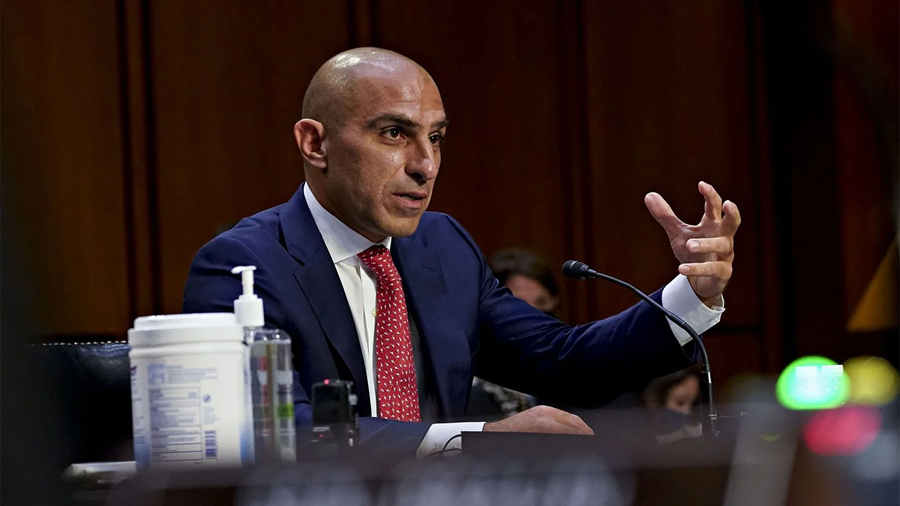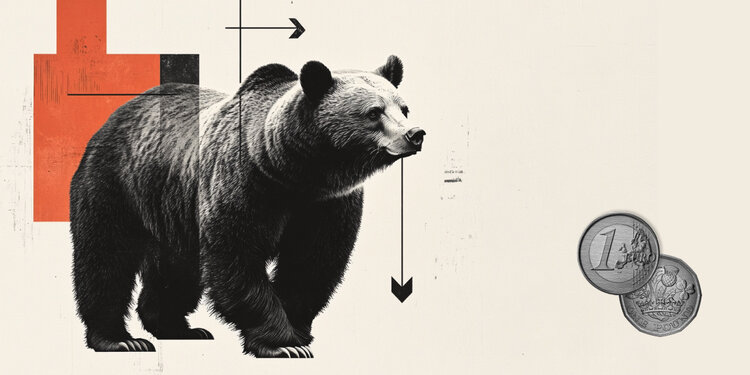Bringing the fish home is becoming an increasingly treacherous task in this Icelandic fishing village. As much of the world is concerned about sea level rise and land submersion, this community has the opposite problem – the sea level is falling.
The marine lagoons that surround the village of Höfn – pronounced “hup”, as if it has hiccups – are becoming shallower and more difficult to navigate. The tides come in and out with less force than before, causing the channel through which the fishing boats pass to slowly fill with sediment.
“Large ships, when they arrive fully loaded with capelin or herring, the keels of the ships will be very close to the bottom. So there is a greater danger that they will hit the bottom, which could lead to hull leaks, financial losses or a shipwreck,” said Þorvarður Árnason, director of the research center at the University of Iceland in Höfn.
The 60 or so men who work on the ships are all locals. The idea of a shipwreck is terrifying.
Þorvarður Árnason, director of the research center at the University of Iceland in Höfn
“The 60 or so men who work on the ships are all locals,” Árnason said. “The idea of a shipwreck is terrifying.”
Höfn lies in the shadow of Iceland’s largest ice cap, Vatnajökull. For centuries, Vatnajökull’s mighty weight compressed the ground beneath it. But global warming is causing these ice caps and glaciers to melt rapidly, now faster than at any time in the last 200 years. As they disappear, the ground is literally rising.
Understand what happens on glaciers in Iceland:
- When glaciers melt, the water that formed them flows into the ocean, and this has two major consequences;
- For centuries, glaciers have been pushing the ground beneath them;
- Once they start to melt, they get lighter and relieve some of the pressure on the earth below, which causes the ground to rise back up;
- Large glaciers also have a gravitational effect on the ocean, pulling water closer to them;
- When they melt and lose mass, this effect becomes weaker and the waters flow to other places;
Where Iceland’s name comes from is no mystery – in English, the country’s name is “Iceland”, which translates to “land of ice”, and about a tenth of the country is covered by glaciers. But the Arctic is experiencing the most dramatic temperature rise in the world, and as a result, Iceland is now losing about 10 billion tons of ice each year, according to NASA. At this rate, Iceland could be ice-free by 2200.
GPS measurements show that the soil in Höfn has been increasing by up to 1.7 centimeters per year. The closer the land is to the melting glacier, the faster the ascent — about a 20-minute drive north, the ground is rising by up to 3.8 centimeters each year.
At Höfn, Árnason has watched events with concern. The village is linked to the fishing industry and most families there depend on it. If the boats fail to get in, it would almost certainly spell financial ruin.
But there’s another reason sea levels around Iceland are falling: gravity.
The rapid melting of Greenland’s glaciers and ice sheet is causing sea levels to rise in most parts of the world, purely by adding huge volumes of water to the ocean.
But this rise has not been uniform. Counterintuitively, Greenland and the territories around it, where melting is happening the most, are actually experiencing a drop in sea level, and not just because of this rising ground phenomenon.
Anything that has mass has its own gravity. The bigger it is, the more gravity it will have.
“The ice sheet is so heavy that it pulls the ocean towards it, due to gravity. But if the ice sheet melts, that pull starts to weaken and the water moves away,” said Thomas Frederikse, a postdoctoral fellow at the NASA’s Jet Propulsion Laboratory.
“The farther you are from the ice sheet, the more water you get.”
NASA scientists estimate that if the global mean sea level rises by 1 meter – which would be in part due to melting ice in Greenland – it would actually drop by 20 centimeters around Iceland. This is because it is very close to Greenland, where this gravitational shift is taking place.
And while melting in Iceland itself will play a role in global sea level rise, it holds a minimal amount of water compared to the world’s largest ice sheets.
If all of Iceland’s glaciers melt, the global mean sea level will rise by 1 centimeter. On the other hand, Greenland and Antarctica have enough ice to trigger catastrophic impacts – if all of Greenland were to melt, it would add 7.5 meters to global sea level. Antarctica has enough ice on the mainland to raise sea levels by almost 60 meters if it all melted.
Melting ice accounts for about two-thirds of the world’s sea level rise. But climate change is hitting our oceans in another way.
As humans emit more greenhouse gases – mostly from burning fossil fuels like coal, oil and natural gas for energy – sea temperatures are also increasing, and this extra heat is causing the ocean to expand.
When water heats up, its molecules move faster and spread out more, which increases its volume. Scientists estimate that approximately one-third of global sea level rise can be attributed to this expansion.
The latest scientific evidence shows that even if the world stopped burning fossil fuels today, sea level rise will still occur until 2050. However, future emissions will have enormous consequences beyond 2050.
If the world warms 3 to 4 degrees Celsius above pre-industrialization levels, scientists warn that the average global sea level rise could reach 70 centimeters by the end of the century, threatening the viability of human life in some places. The temperature rise is already at 1.2°C.
Iceland’s effects on global sea levels:
- When glaciers melt in Iceland, the impact on global seas is not uniform;
- Melting contributes more to rising sea levels in other regions of the planet – such as the Marshall Islands – than in Iceland’s own waters;
As fishermen in Höfn grapple with the consequences of shallower seas, people in the Marshall Islands have been watching the sea rise rapidly around them.
The Marshalls are made up of five islands and 29 low-lying atolls in the form of ring atolls. As ice melts on the other side of the globe in places like Greenland and Iceland, the resulting sea level rise has forced people here to change their way of life and think about their future in a more existential way.
“There are no mountains, there is ocean on both sides and the land is really thin and small,” said Kathy Jetn̄il-Kijiner, writer and climate envoy for the Marshall Islands Ministry of the Environment.
“The coastline is getting shorter and shorter, it is a real threat to the physical existence of our land.”
The average elevation above sea level in the Marshall Islands is just 2 meters. Here, every inch matters.
Globally, the average sea level has risen by more than 20 centimeters since the beginning of the 20th century and has accelerated in the last three decades. Since 1993, the level has risen by 2.8 to 3.6 millimeters on average. At the same time, Marshalls experienced about twice that, with a 7mm increase, according to an Australian government climate report.
Rising sea levels here are causing flooding, which is becoming more and more frequent. Waves regularly wash away the protective barriers lining the shore.
Streets are being flooded more often. Drinking water is polluted. Livelihoods are destroyed. Jetn̄il-Kijiner says the threat of a flood always looms large in people’s minds.
It’s a constant reminder of the existential threat this nation faces from climate change, and that they need new tools to adapt, quickly.
A joint study by the Marshall government and the World Bank outlined the country’s options, from building sea walls to reclaiming land and raising buildings. The most intense responses include the uplift of entire islands and, as a last resort, migration.
“We have to be on alert.” We just have to be prepared that we might have to stay on solid ground, people have to go home and leave their workplaces halfway through so they can tend to their homes and their gardens or things like that because they’ve been flooded.” , said Jetn̄il-Kijiner.
This is completely unfair. We shouldn’t have to do this. These are extreme measures that will cost us billions of dollars, all because of something to which we contributed nothing.
Kathy Jetn̄il-Kijiner
His family, like most of those residing on the islands, built a concrete wall to protect their home from constant flooding. The barrier they used to have, made of tin panels, was no longer enough.
The new wall is holding up – for now.
“But who knows how long this will work? The impacts will continue to come because we are not reducing emissions. [globais] as quickly as we should,” she said. “Here, it got so severe that now we’re exploring really extreme adaptation options, like elevating our islands, even though we have to build completely new islands.”
According to the joint study, 40% of buildings in the capital Majuro will be in danger if sea levels rise by 1 meter, with 96% of the city at risk of frequent flooding.
“This is completely unfair.” We shouldn’t have to do that,” said Jetn̄il-Kijiner.
“These are extreme measures that will cost us billions of dollars, all because of something to which we contributed nothing.”
Source: CNN Brasil
I’m James Harper, a highly experienced and accomplished news writer for World Stock Market. I have been writing in the Politics section of the website for over five years, providing readers with up-to-date and insightful information about current events in politics. My work is widely read and respected by many industry professionals as well as laymen.





